Army veteran from Wyoming regains ability to move his fingers after groundbreaking procedure
Army veteran Private Jackson Schroeder and OrthoCarolina Drs. Glenn Gaston and Bryan Loeffler share the success of a first-of-its-kind surgery with Fox News Digital.
A groundbreaking surgical procedure combined with exciting new technological strides is offering new hope and help for amputees.
Private Jackson Schroeder, an Army veteran, was one of the early few to receive the procedure that he revealed to Fox News Digital has changed his life.
The Starfish Procedure, as it's called, has given partial hand amputees the ability to move each individual finger with the combination of a myoelectric prosthetic — a brand new process.
"When you experience something traumatic that your mind eventually accepts is going to be life-altering, in some form or facet, you kind of start to think to yourself, ‘What next?’" said Schroeder. "Is there hope?"
"This procedure," he said, "has really given me hope for a more normal future."

Private Jackson Schroeder (at left) is pictured with fellow soldiers Eric Randall, 82nd Airborne, 2nd Battalion, 504th Infantry Regiment, and Noah Vermilya, 1st Battalion, 75th Ranger Regiment. (Jackson Schroeder )
Twenty-one-year-old Schroeder, from Casper, Wyoming, first enlisted in the Army directly out of high school.
While on holiday leave in 2019, an accident involving one of his weapons led to the loss of four fingers on his left hand.
Just four months later, Schroeder was connected with Drs. Glenn Gaston and Bryan Loeffler — two upper extremities surgeons at OrthoCarolina who developed the Starfish Procedure.
The opportunity before him was a no-brainer, Schroeder said, as his injury threatened to end his early military career.
After he was approved as a great candidate, Schroeder was the first veteran to receive the groundbreaking surgery.
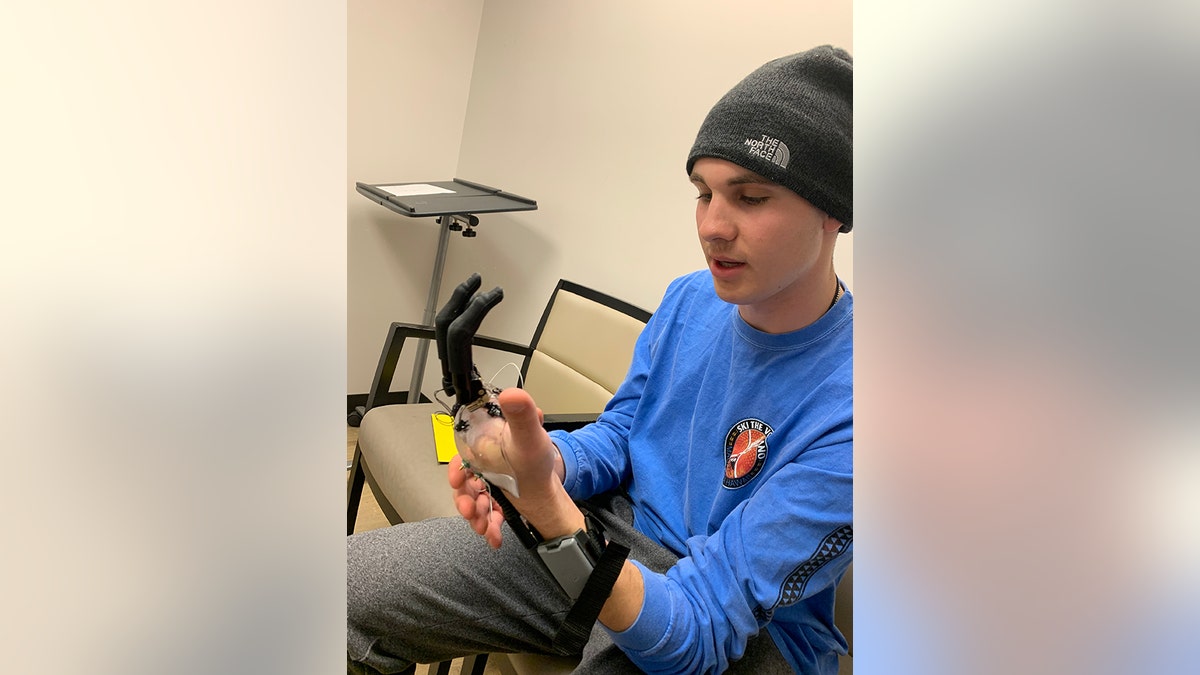
Army veteran Jackson Schroeder tries out his hand prosthetic after receiving the Starfish Procedure, thanks to Drs. Glenn Gaston and Bryan Loeffler. He was the first veteran in the United States to benefit from the new procedure. (Jackson Schroeder )
"Almost the next day post-surgery, I felt like I could use my hand in a different way," he said.
"It felt a lot different."
The new technology developed in Charlotte, North Carolina, allows the patient to move each individual finger. It's a function that was not available previously.
Creating an ‘intuitive and natural’ prosthetic
OrthoCarolina’s Gaston and Loeffler, the masterminds of the procedure, also started the clinic’s Reconstructive Center for Lost Limbs.
Gaston told Fox News Digital that the idea was sparked nearly a decade ago when the doctors were discussing the poor quality of prosthetics for partial hand amputees.

Dr. Glenn Gaston is the hand fellowship director at OrthoCarolina. He serves as hand consultant for the Carolina Panthers, the Charlotte Hornets, Hendrick Motor Sports (NASCAR) and Joe Gibbs Racing (NASCAR), among other organizations. (OrthoCarolina)
"They just don’t give good function," he said.
"You’ve got something that either looks like a hand but doesn’t function, or functions but all the fingers open and close at the same time."
Loeffler added that what it came down to was "looking at a problem that didn’t have a good solution."
When part of the hand is amputated, the muscles that control the fingers still exist.
This led Gaston and Loeffler to the dream of accomplishing an "intuitive and natural" prosthetic so that recipients could move every finger individually.
Gaston explained that when part of the hand is amputated, the muscles that control the fingers still exist — so the doctors’ mission wasn’t out of reach with new and developing technology.
NEW YORK JETS PAY TRIBUTE TO AMERICA'S MILITARY, VETERANS WITH ANNUAL SALUTE TO SERVICE GAME
"We took the [myoelectric fingers] that were in existence, and we figured out how to make them work best," Loeffler said.
That way, he added, "a patient could learn how to use them without spending hours and hours trying to figure out how to make a finger go up and down."
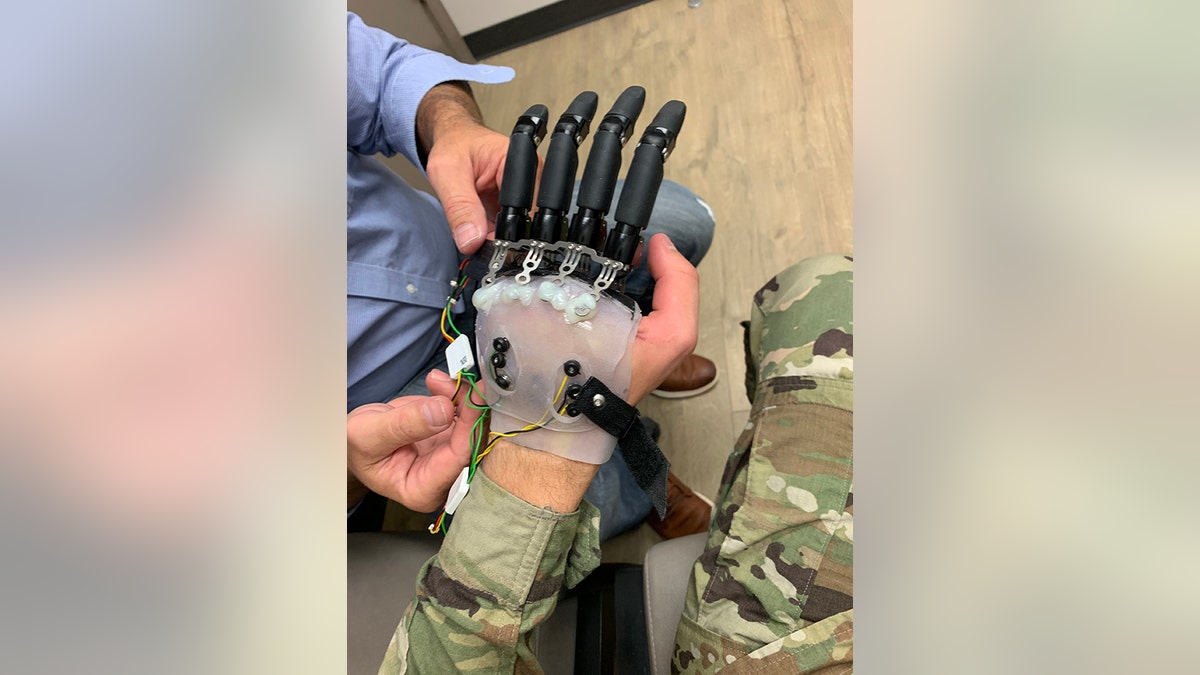
An up-close look at one of Jackson Schroeder's hand prosthetics. (Jackson Schroeder )
The doctors named it the Starfish Procedure, since starfish have the ability to regrow lost limbs on their own. The dissected hand muscles also resemble the marine animal.
The operation transfers the live muscles in the hand to underneath the skin on the back of the hand — which lines up with the sensors on the prosthetic to spark function.
ARMY VETERAN REGAINS ABILITY TO WALK WITH ROBOTIC EXOSKELETON AFTER PARALYSIS: ‘BEYOND WORDS’
After testing the procedure on their first patient in 2016 and seeing "phenomenal" results, the doctors built the first prosthetic with the help of Hanger Clinic, a medical device company.
"And he [their first patient to receive this] became the first person in the world who had independent finger control of a prosthetic hand," Gaston said.
25 successful Starfish surgeries
Schroeder noted that the procedure is not "incredibly invasive," which allowed him to have a swift recovery. He said he began using the prosthetic and applying it about a month later.
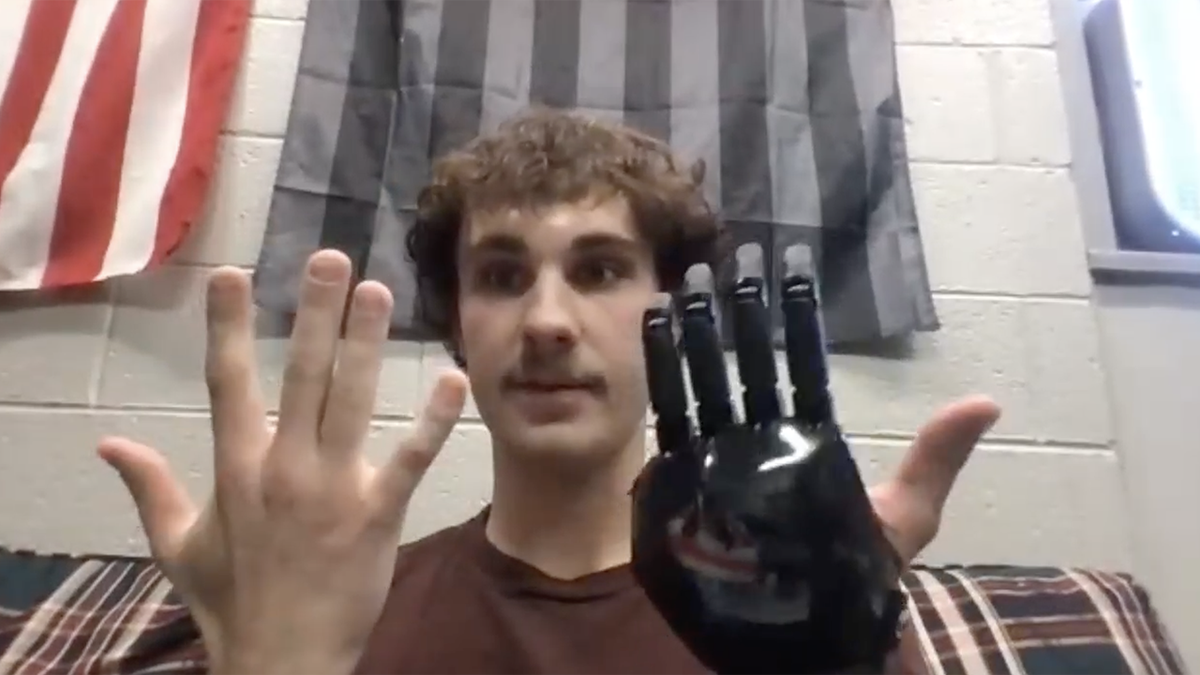
Jackson Schroeder shows off his hand prosthetic during an on-camera interview with Fox News Digital on Nov. 7, 2022. (Angelica Stabile/Fox News Digital)
"I don’t think it’ll be a struggle feeling out of place in the workplace, or feeling like I’m at a disadvantage," he said.
"I wouldn’t call it an advantage, but my friends definitely think it’s pretty cool," he also said.
The procedure has since been successfully administered to 25 patients in OrthoCarolina’s care — including Private Schroeder.
"We have a great affinity for our military at OrthoCarolina," Gaston said.
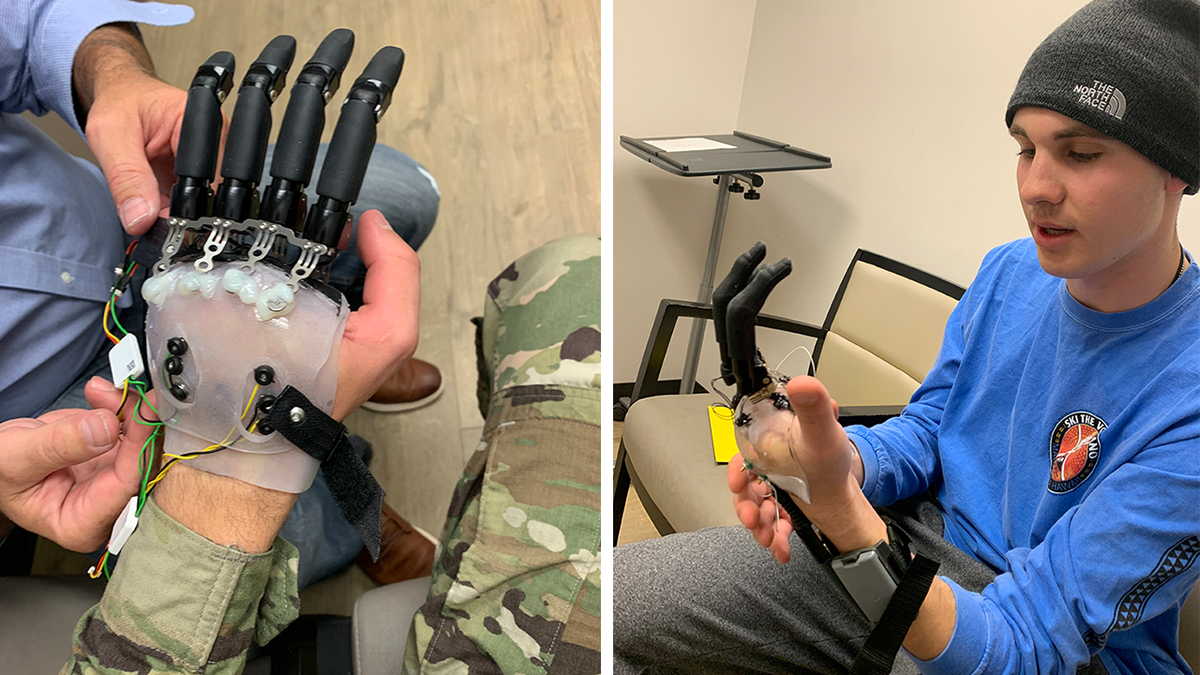
Army veteran Jackson Schroeder tries out his hand prosthetic. "When the opportunity to help Jackson came along, we couldn’t have been more excited," said Dr. Gaston, one of the surgeons who created the Starfish Procedure. (Jackson Schroeder )
"We absolutely have immense respect for our military and the service they provide, and we’re honored to give any small service back."
OrthoCarolina also offers a fellowship that trains four doctors per year — and one of those open slots is always held for military physicians.
"So when the opportunity to help Jackson came along, we couldn’t have been more excited," Gaston said.
Loeffler championed Schroeder as a "polished young man" who was able to face a devastating injury with a positive attitude.
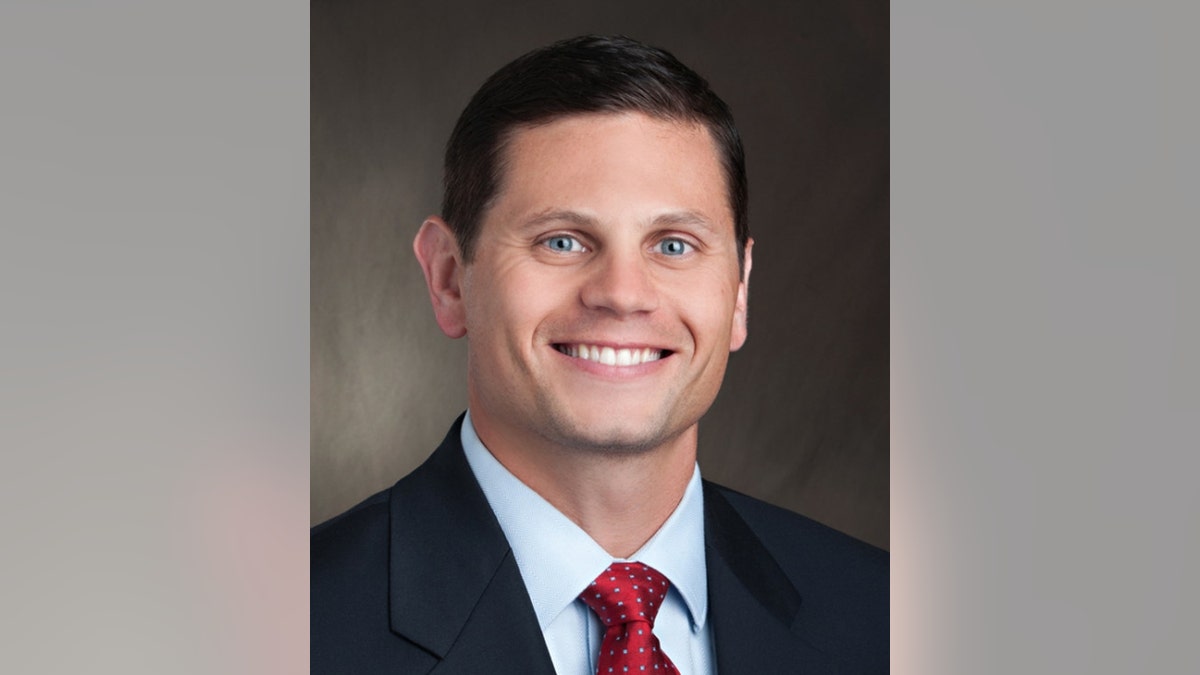
Dr. Bryan Loeffler, named one of North Carolina's Top Doctors, is a specialist in the full spectrum of hand and upper extremity disorders, from the fingertips to the shoulder. (OrthoCarolina)
"We were really privileged to have the opportunity to take care of Jackson," he said, noting his military service.
"It was a real honor to take his situation and try to make the most of it."
CLICK HERE TO SIGN UP FOR OUR LIFESTYLE NEWSLETTER
Schroeder shared in a sweet moment that he’s "not really sure where he would be" without the help of his two doctors.
Gaston said that watching amputee "veterans" within the clinic shed some hope with others has been "really special" as the procedure catches on.
"Raising awareness, raising hope, making people recognize that there now are centers of excellence like our clinic that exist that can help these patients" — this is what is so rewarding, he noted.
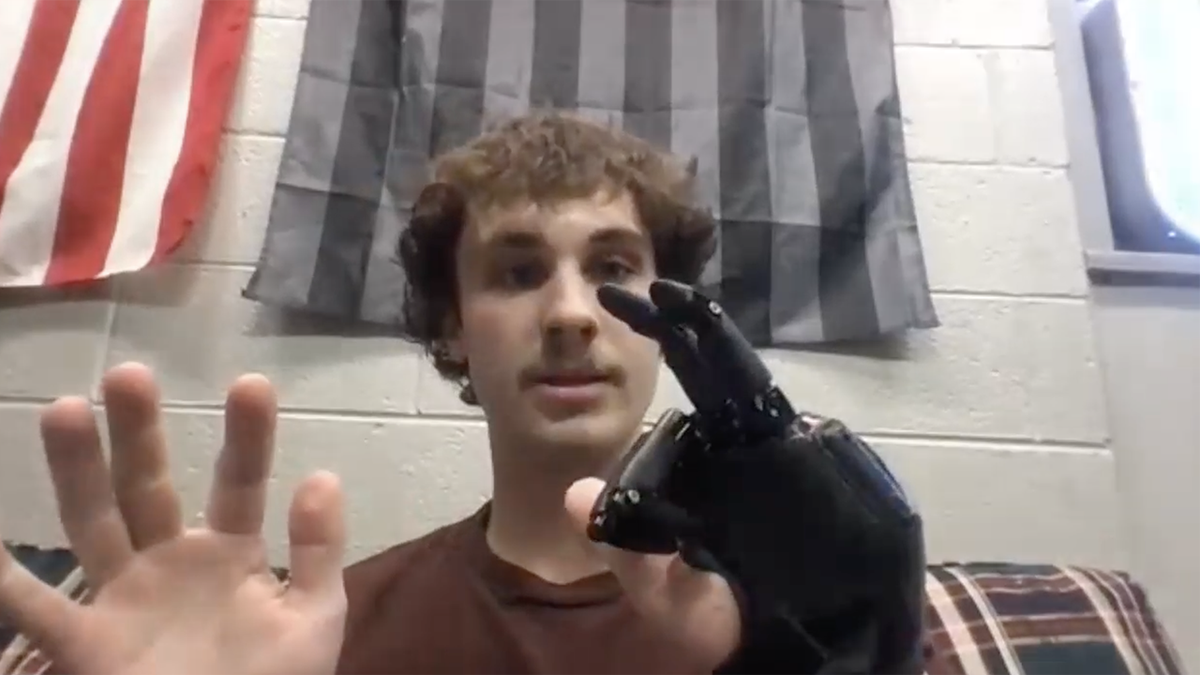
Jackson Schroeder demonstrates his finger movement during an interview with Fox News Digital on Nov. 7, 2022. (Angelica Stabile/Fox News Digital)
The clinic is now on its third generation of the prosthetic, said Loeffler. The technology can capture the purpose of the surgery "even better" than before.
"So, what [Jackson] is able to do with it is absolutely unbelievable," he said.
"I would honestly say he probably has the single best control of a partial hand prosthetic on the face of the Earth."
CLICK HERE TO GET THE FOX NEWS APP
Schroeder was discharged from active duty in May 2021.
He is currently a sophomore at the University of Wyoming and is studying marketing.






















